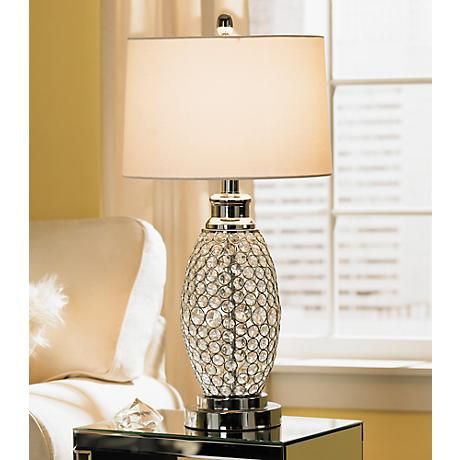Lamps are an essential element of home design. They provide much needed light for day to day living. They are an easy way to update a room’s look or fix issues like limited natural light. They can set the mood for the room through their light levels, locations and look, or they can clash with the intended atmosphere. Here are four tips for incorporating floor and table lamps into your home’s design.
Choose the Right Light for the Job
One of the most important factors in selecting the right table and floor lamps is considering its purpose. True task lamps should be on flexible arms so you can shine the light where it is required. If you don’t know how you’ll use it or may want different levels of light, such as when you alternately study, read and work at a desk, an adjustable stand is a good idea. Consider versatile goose neck lamps near dining tables, since you can move it out of the way while still enjoying the light or shine the light while you’re working at the table.
Lamps should be located where there isn’t enough light. If you’re going to put a lamp by your bed so you can read or see when you wake up in the morning, the light source should be located where you can easily turn it on and off. That makes a small lamp a better choice than a tall standing lamp. If the lights will be sitting above a recliner or beside a couch, the switches again should be within easy reach of where the person is sitting.
Select Sleek Designs
Forget ornate antique lamps unless you’re trying to create a time warp. The modern design trend is more towards smooth, sleek shades. They provide light at whatever level you require, but they are discrete and minimalistic. Glass shades are popular for maximising light, but the light they may reflect from other sources can make them too bright. They’re also brittle which rules out putting them where pets, children and careless guests may knock them over. Other types of LED lights in minimalist fixtures are available that could handle use and abuse while always looking great.
Complement the Décor
Remember that your lighting is there to complement the décor, not be a decorative piece in and of itself. This is why classic metal frames are so popular. White, grey, beige, bronze and other colours allow many lamps to fade into the background, though you can use their light however you need to. Lamps like these can be found here – www.pagazzi.com/floor-lamps.
That you want lamps to blend into the background is even true of accent lamps – the attention should be where the light shines, not where it emanates. If you want a reading nook, opt for a searchlight sphere or multi-faceted floor lamp, not a light sculpture.
Coordinate the Lights
It is amazing how many people neglect this aspect of interior decorating. When you buy lamps, they not only need to all fit the décor but look good together. This doesn’t mean that all the new lights should be lamps or overhead lamps. However, they should be coordinated. If the room has a pastel colour palette, you could have a mix of white, chrome and off-white lamps, overhead lamps and task lights. If the colours are darker, then a mixture of black light fixtures could be used, though this could range from black and grey floor lamps to black tripod floor lamps. Bronze and brass complement a room with natural wood tones.
Without lighting, any room is incomplete. Inappropriate lighting will undermine your efforts to set a mood while interfering with your ability to fully use the space. Take the right factors into account, and you can enjoy your living space while others will appreciate how it looks.

Leave a Reply